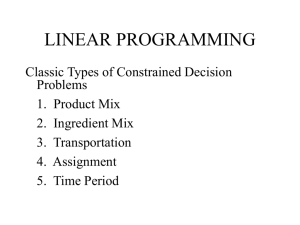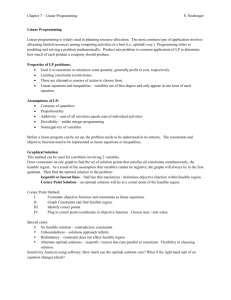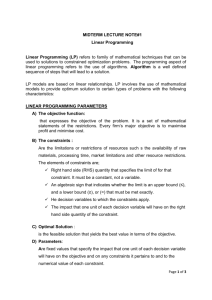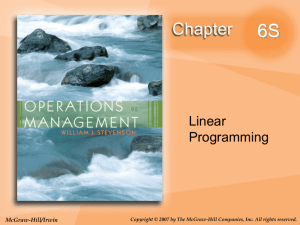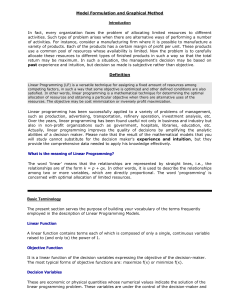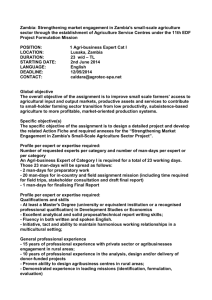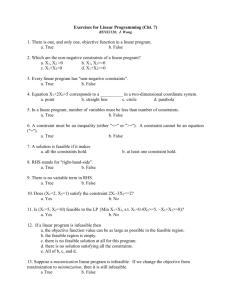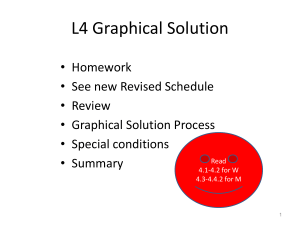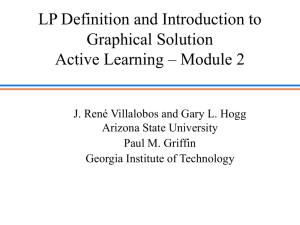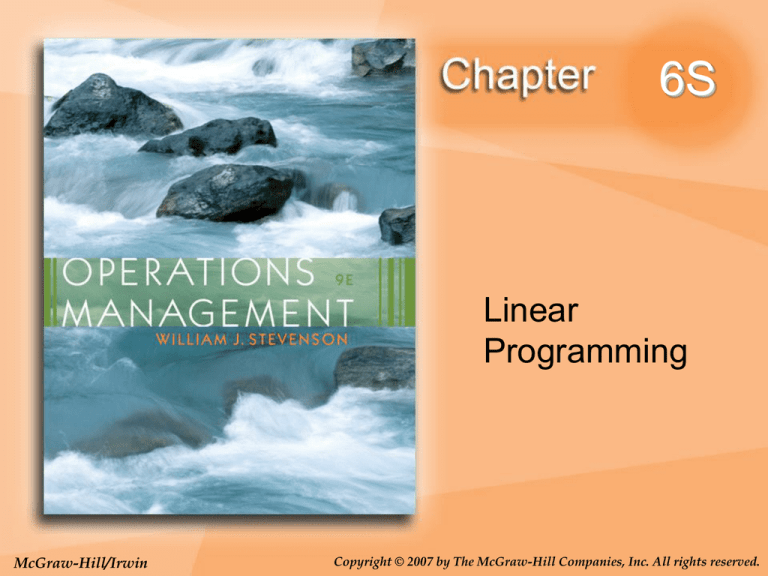
6S
Linear
Programming
McGraw-Hill/Irwin
Copyright © 2007 by The McGraw-Hill Companies, Inc. All rights reserved.
Learning Objectives
Describe the type of problem tha would lend
itself to solution using linear programming
Formulate a linear programming model from
a description of a problem
Solve linear programming problems using
the graphical method
Interpret computer solutions of linear
programming problems
Do sensitivity analysis on the solution of a
linear progrmming problem
6S-2
Linear Programming
Used to obtain optimal solutions to
problems that involve restrictions or
limitations, such as:
Materials
Budgets
Labor
Machine time
6S-3
Linear Programming
Linear programming (LP) techniques
consist of a sequence of steps that will
lead to an optimal solution to problems,
in cases where an optimum exists
6S-4
Linear Programming Model
Objective Function: mathematical statement
of profit or cost for a given solution
Decision variables: amounts of either inputs
or outputs
Feasible solution space: the set of all
feasible combinations of decision variables as
defined by the constraints
Constraints: limitations that restrict the
available alternatives
Parameters: numerical values
6S-5
Linear Programming
Assumptions
Linearity: the impact of decision variables is
linear in constraints and objective function
Divisibility: noninteger values of decision
variables are acceptable
Certainty: values of parameters are known and
constant
Nonnegativity: negative values of decision
variables are unacceptable
6S-6
Graphical Linear Programming
Graphical method for finding optimal
solutions to two-variable problems
1.Set up objective function and
constraints in mathematical format
2.Plot the constraints
3.Identify the feasible solution space
4.Plot the objective function
5.Determine the optimum solution
6S-7
Linear Programming Example
Objective - profit
Maximize Z=60X1 + 50X2
Subject to
Assembly 4X1 + 10X2 <= 100 hours
Materials
3X1 + 3X2 <= 39 cubic feet
X1, X2 >= 0
6S-8
Solution
6S-9
Constraints
Redundant constraint: a constraint that
does not form a unique boundary of the
feasible solution space
Binding constraint: a constraint that forms
the optimal corner point of the feasible
solution space
6S-10
Solutions and Corner Points
Feasible solution space is usually a polygon
Solution will be at one of the corner points
Enumeration approach: Substituting the
coordinates of each corner point into the
objective function to determine which corner
point is optimal.
6S-11
Example No.1
GM operates a plant that assembles and
finishes cars and trucks. It takes 5 man-days
to assemble a truck and 2 man-days to
assemble a car. It takes 3 man-days to finish
each type of vehicle. Because of man-power
limitations, assembly can take no more than
180 man-days per week and finishing no more
than 135 man-days per week. If the profit on
each truck is $300 and $200 on each car, how
many of each should they produce to
maximize profit?
6S-12
Flair Furniture Co. Data Example
Tables
Chairs
(per table)
(per chair)
Profit
Contribution
$7
$5
Hours
Available
Carpentry
3 hrs
4 hrs
2400
Painting
2 hrs
1 hr
1000
Other Limitations:
• Make no more than 450 chairs
• Make at least 100 tables
6S-13


